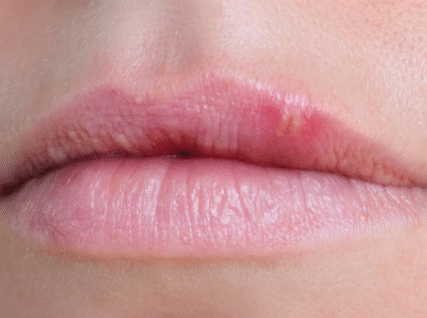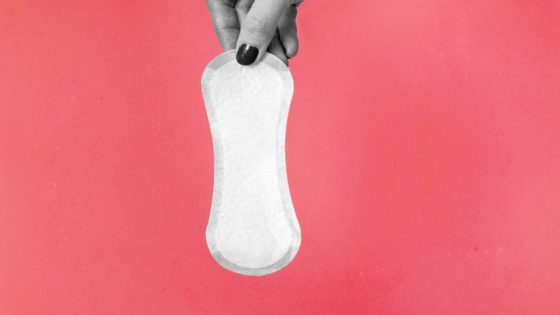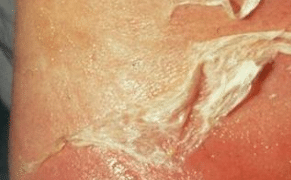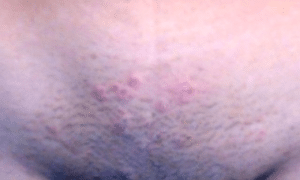What exactly are blisters on lips? How are the blisters formed and transmitted? Could there be treatment of blisters? Below are very insightful and detail explanations on the problem of blisters and the various possible home remedies.
Blisters on Lips Causes
What are blisters? Are small fluid-filled sacs that usually form in the superficial layer of the skin after it has been damaged through friction or forceful rubbing, burning, freezing or chemical exposure. Blisters can develop anywhere on the body but are most common on the hands and feet.
Fluid collects under the damaged skin, and if remain unopened they cushion the tissue underneath. These protect the tissue from further damage and allow it to heal.
Most blisters are filed with a clear fluid (serum), lymph, plasma, and in most cases may be filled with pus or blood if they become inflamed or infected.
Other names for blisters are Vesicles (usually for smaller blisters and bulla for larger blisters.
Causes of blisters
Blisters are round or oval bubbles of fluid under the skin that may be painful or itchy, or they may not cause any symptoms. Some of the causes of blisters include:
Irritation- Blisters can be caused by physical factors that irritate the skin, such as exposure to chemicals, friction (rubbing of the skin), irritation, extreme cold or heat. Blisters on the feet can be as a result of tight shoes that rub the skin in one particular area. Blisters can also be due to contact with dermatitis or a skin reaction to some of the chemical irritants. Intense cold can trigger frostbite, which often leads to blisters once the skin is regain warmth.
Allergies- Allergic contact to chemicals such as eczema may result in blisters. Poison such as poison ivy, poison oak or poison sumac cause blisters when you come in contact with them.
Infection-infections that cause blisters include impetigo, an infection of the skin caused by bacteria, viral infection of the lip and genital area due to herpes simplex virus(type 1 and type 2), chickenpox and shingles.
Skin disease- numerous skin diseases cause blisters, examples include pemphigus, herpetiformis and pemphigoid. There are some forms of inherited skin conditions such as bullosa in which pressure or trauma commonly leads to blisters and porphyria cutanea (in which sun exposure proves blisters).
Medication-many medications, such as( Negram) and furosemide, can cause mild blistering skin reaction. Others such as (vibramycin) can increase the risk of blistering sun by increasing skin sensitivity to sunlight. Some medications if not administered well can trigger more severe, even life threatening, blistering disorders such as epidermal necrolysis an illness that cause severe skin damage.
Blister on lip symptoms
Infections that are as a result of HSV May start to rapidly multiply and you may start to experience body fatigue and swollen neck glands. It will therefore be followed by symptoms below:
- Small blisters that are filled with fluids develop on the edge of the lips and nostril. When the outbreak is severe, the blisters may also start to appear on the cheeks. The severity of the blisters depends on what causes blisters on lip such as the risk factors
- Blisters may stay for two to three days before bursting to ooze. Small wounds experienced will start to form yellow crusting.
- Burning The lips, mouth or nostril will start to develop inflammation that will accompany itching.
- You may experience itching around the mouth and on the lips. Many people will experience this symptom during the initial outbreak of the infection. Itching may spread up the nostrils and other areas that may be affected.
During the first outbreak, the symptoms are more severe as compared to when it recurs. Some people may experience symptoms such as fever, headache, painful gums and muscle pains.
How to prevent blisters on lip
- Avoid risk factors such as stress, fatigue, high sunlight and extreme temperatures
- When you are experiencing the outbreak of this infection, avoid touching the blisters with hands. Your fingers may carry the virus to the other parts of the body
- After initial infection visit your doctor for medication and advice on how to help the recurrence of the blisters.
- Use sunscreen or lip balm that contains sun protection properties to prevent ultraviolet rays from the sun that may trigger blisters on the lip.
- Avoid sharing sharp objects such as needle or razors with an infected person this may increase the chances of getting the infection.
Blisters on Lips not Cold Sore
Cold sores are small, painful, fluid-filled blisters that develop on the lips or around the mouth. They are caused by herpes simplex virus and usually clear up without treatment within ten days. Unlike most viral infections, the cold sore virus is not completely eliminated by the body defense mechanism and for this reason they often recur.
You may not have any symptoms when you first become infected with the herpes simplex virus. Any outbreak of cold sores may happen sometime later. Cold sores often start with a tingling, itching or burning sensation around your mouth. Small fluid-filled sores then appear, usually on the edges of your lower lip.
In most cases the virus is passed on in early childhood for example when a child is kissed by a family member or a friend with cold sore. The virus passes through the skin and travels up the nerves, where it lies inactive dormant until it is triggered at a later date.
What you need to know about Cold sore
Here are some few points you need to know about cold sores.
- They usually heal within ten days without treatment.
- The herpes simplex virus strain HSV-1 is the main causative agent of the cold sore.
- The virus is highly contagious and can be passed on through direct contact.
- After a person has been infected with cold sore causing virus, it remains inactive for most of the time but triggers such as fatigue and injury can activate it.
- Cold sores are tiny blisters that develop on lip or around the mouth
Causes of cold sore
The virus that causes cold sores is known as the herpes simplex virus (HSV). There are two types of HSV, type 1 and type 2. In most cases cold sores are caused by type 1. Herpes simplex is contagious oral virus. Saliva is means of spreading the virus hence the virus is spread from one person to the other through kissing or through close contact with the sores or even from contact with the skin shedding the virus.
The most contagious period is when a person has active blister-like sores but once the blisters have dried over within few days the contagious risk significantly reduced. It is impossible to get herpes (cold sores) from contaminated surfaces, towels, or washcloths.
However, the virus enters the nerve cells and travels up the nerve until it comes to a place called a ganglion, which is a collection of nerve cells. Here the virus transforms itself into a dormant state. Then later transforms itself into active state and start to multiply and travels down the nerve to the skin, causing blisters on lips known as cold sores. The way this happens is not medically known, but it is known that some conditions such fever, hormonal changes, colds seem to be associated with its recurrences.
Cold sore triggers
Factors that are medically thought to trigger outbreak of cold sores include:
- Having another infection, such as a respiratory infection
- Strong sunlight
- Menstruation
- An injury to the affected area
- Tiredness and fatigue
- Having high temperatures on the body (fever)
- Emotional upset or psychological stress
- However in most cases there is no known trigger for the occurrence of cold sores.
Symptoms of cold sores
Usually there are no symptoms when you become infected with herpes simplex virus for the first time, however, at a later date the cold sores may appear and keep coming back.
Herpes simplex virus primary infection symptoms
In Children
Symptoms of the primary infection are likely to develop in children younger than seven years old. Symptoms include:
- Dehydration
- Nausea
- Headaches
- High body temperature (fever) of above 35C
- Sore throat and swollen glands
- Producing more saliva than normal
- Swollen and irritating gums, with small painful sores in and around the mouth.
In adults
Primary herpes simplex viruses are rare in adults but symptoms are similar to those experienced by children. In adults you will experience a sore throat with or without swollen glands. You may also have a bad breath and painful sores in and around your mouth.
If you develop the herpes simplex virus at an early age, it may be triggered periodically in later life and can cause recurring bouts of cold sores. After primary infection, the symptoms are usually reduced to just the cold sores themselves.
Recurring cold sores
Recurring cold sores usually last for less time and are less are less severe than the primary infection, although you might also have swollen glands. An outbreak of cold sore usually starts with an itching, tingling or burning sensation around your mouth. Small fluid filled sores then develop, usually on the edges of your lower lip.
If you have frequent infection you may develop cold sores in the same place every time. They may grow in size, cause irritation and pain. Initially they may ooze before bursting within 72 hours of the initial tingling sensation. If cold sores are very troublesome, they can be suppressed by taking an antiviral tablet called acyclovir regularly, everyday for few months. Most cold sores disappear within ten days and usually heal without any treatment.
Sun Blisters on Lip
This type of lip blisters occur frequently during summer. They are usually sunburns located on lip area and they are very different from cold sores.
Sun blisters occur as a result of exposing the lip area to the sun rays and not herpes virus. These blisters are not contagious, unlike gingivitis, which can be transmitted through kissing. Sun blisters must be treated like low-grade sunburns, no use of antiviral medicines required.
Causative agent
Sun blisters on the lip lesions are as a result of the UV rays in sunlight or tanning beds which damage the sensitive skin area from the lip area. In fact they are second degree sunburns, which typically present with blisters. Sun blisters appear due to prolonged exposure to sun.
More often people neglect to apply ant-UV rays on their lips, nose and ear tips, a factor that makes these areas vulnerable to burns from the sun. it is precisely because people do not perceive these areas as sun sensitive that they are always surprised by lesions. Moreover they consider these sun blisters to be cold sores because they located on the lips. As such they will apply cold sore medicines such as antiviral cream on the blisters, which is not the best treatment for burns.
Symptoms of Sun blisters
First the lips become red,( erythematic) . Then, the lips become swollen and painful. Patients typically feel their lips and the area them to be typically warm. All these are a sigh of inflammation on the lip. Lastly, blisters appear in the affected area due to intense inflammation and damage to the deeper skin layer.
The blisters will then become increasingly larger, up to a point when they begin to vanish. Depending on the intensity of the sunburn, the symptoms will prolong for few days. If the blisters do not heal after three or four days, patient should consult a health professional to avoid complications.
Water Blister on Lip
Water blisters on the lip usually occur as clear small blisters on inner part of the lip (inside the mouth). If the infected person drains they can get an infection in this blisters sites. In this case, the inflammation is somehow more intense and the area gets infected, it will begin collecting pus. This type of lesion is commonly called canker sores.
The skin on the inner lip is sensitive to trauma; when damage is caused by either rough textured food item or an accidental bite happens, the saliva in the oral cavity maintain a permanent humid environment and this causes lesions to develop quickly in the area. These result to further damage of the deeper layers of the skin causing small blister to emerge.
The blisters on the inner lip are also accompanied by slight inflammation and pain. It is important that the water blister is maintained intact.
Causative agent
Water blisters on lips are caused by low grade traumas to the inner lip, such as accidental bite or damage caused by rough textured food. They can also appear as a side effect of a certain type of medication such as antibiotics or can also appear as a reaction to a cosmetic agent such as a skin care product. When water blisters get infected, they transform into canker sores.
Can Chapped Lips cause Blisters
Can chapped lips cause blisters? Having chapped lips is an annoyance on its own. When you add other factors into the whole matter, like cold sores, experience can become downright painful.
How do blisters and chapped lips connect? Blisters such as cold sores are caused by herpes virus, however, chapped lips allow the skin around our lips to dry out to the point of cracking. Once the cracking opens it can lead to bleeding and exposure to virus. These provides HSV-1 virus within an opportunity to enter the body and cause a flare-up of blisters.
How can chapped lips result to blisters?
Cold sores can flare up anything from excessive stress to intense sunlight. The major outbreak causes are different for anyone. However, they are called cold sores for a reason. Often it is both the cold weather and illness that can trigger flare ups. Below are explanations on how different factors relate to chapped lips.
- Common cold. whenever you have a cold your immune system is compromised hence your sinuses become blocked, it can cause chapped lips because you are breathing more through your mouth and therefore not allowing more moisture to reach your ribs.
- Harsh Temperatures. when air is cold and dry, or when you expose yourself to high temperatures can cause your lips to become chapped. The dryness of the lips cause your lips to crack, open and start to bleed.
Blisters on Lip Treatment
- Take medication
There are various medicines that are effective on how to get rid of blisters on lip in two to three days. Some of these medicines are pills and can be swallowed while others are inform of a cream and they can be applied directly on the blisters. Others are antiviral drugs that are used to treat severe infections and are given through injection. Some of the medicines include:
- Topical antiviral
- Over –the-counter medicines
- Oral antiviral medicines
- Keep the blisters clean
Cleaning the blisters help to keep away other bacterial infection that may increase the healing process of the blisters. Ensure you wash your hands thoroughly before touching the blisters or other parts of the body.
- Avoid salty and spicy foods
For the blisters to heal fast, you need to avoid taking foods that are salty and spicy, such foods causes irritation and stretching of the lips while eating. Irritation may destruct the healing process of the blisters.
How to Get Rid of Blisters on lip, Home Remedies
Various home remedies are effective on how to get rid of blisters. Most of these remedies are obtained from natural resources and ingredients that are available at home and in organic stores within your area of residence. They include:
- Ice compress. Apply ice compress over the blisters, this helps to relieve the itching and burning sensation of the blisters.
- Tea bag. Tea bag contains antioxidants that help soothing the affected areas while speeding up the healing process. After making a cup of green tea, use the tea bag to relieve the discomfort by placing it over the blisters.
- Apply aloe Vera gel. Aloe Vera contains antibacterial properties that help to kill bacteria that may cause infection on blisters. Get the gel directly from the leaves and apply directly to the sores.
- Milk compress. Use cold milk to compress the blisters. Milk contains proteins that are essential in healing while its cool temperatures help to cool the lips reducing itching and a burning sensation.
- Apply tea tree oil. Tea tree oil contains antiviral properties that are effective in controlling the blisters. Dilute tea tree oil and apply immediately the blisters begin to form.
- Baking soda. Baking soda has a soothing effect that is important in helping to relieve the burning sensation and itching sores. Mix the baking soda with water then using your finger or washcloth apply to the affected areas.
- Lemon balm tea. Lemon balm tea helps to speed up the healing process. Simply prepare lemon balm tea and apply over using a cotton ball.
- Garlic. Garlic has antibacterial properties that help to disinfect the sore against other antibacterial infections. Make a paste and apply over the blisters until the blisters go away.
- Apply vanilla extract. Vanilla extracts contain alcoholic components that help to cure the sores fast. It also helps to dry out the blisters. You may apply it three times daily until the blisters get healed.
Further references
- Blister prevention https://www.blisterprevention.com.au
- How to prevent and treat blisters https://www.aad.org
- Blisters –injuries and first aid-NHS https://www.nhsinform.scot
- Blisters treatment and prevention sportsinjuryclinic.net











